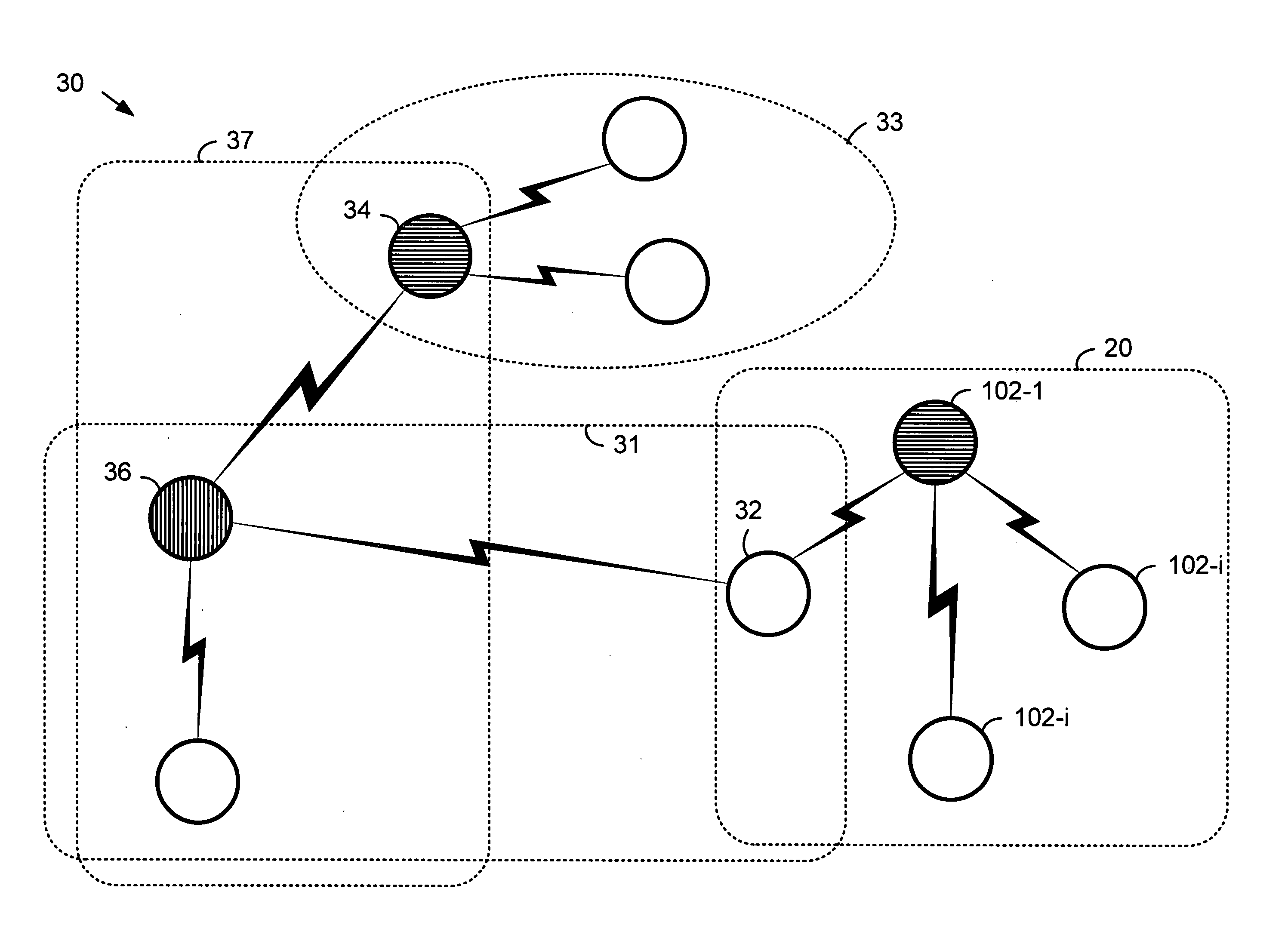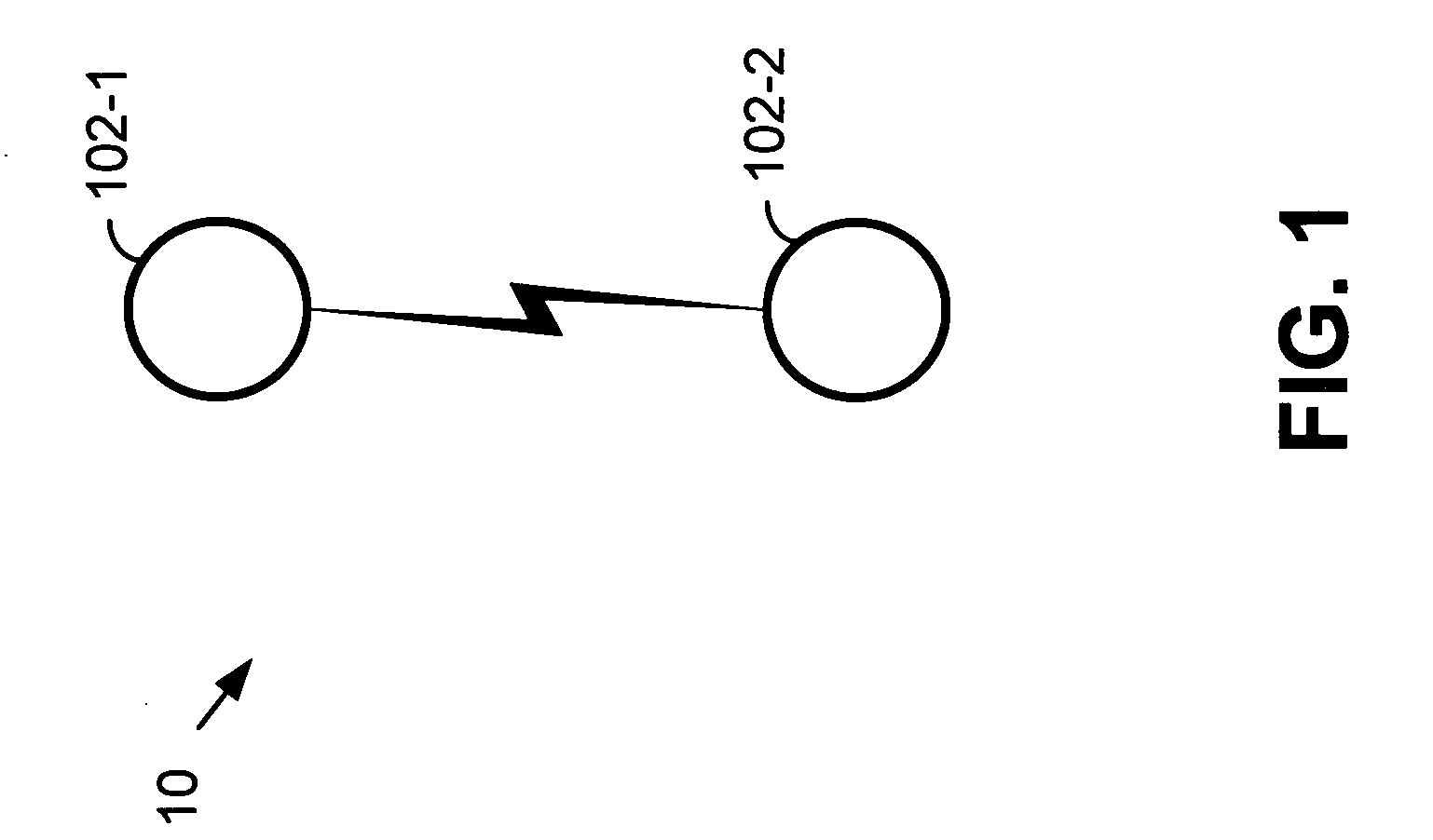Wireless device authentication at mutual reduced transmit power
a wireless device and transmit power technology, applied in the field of wireless network communications, can solve the problems of eavesdropping devices' inability to intercept authentication, and achieve the effect of reducing power operations, facilitating selection of a particular network, and reducing transmit power
- Summary
- Abstract
- Description
- Claims
- Application Information
AI Technical Summary
Benefits of technology
Problems solved by technology
Method used
Image
Examples
Embodiment Construction
[0020]FIG. 1 illustrates a network 10 that includes two wireless devices 102-1 and 102-2. Network 10 is, for example, a wireless Bluetooth point-to-point piconet where wireless device 102-1 is a master Bluetooth system and wireless device 102-2 is a slave Bluetooth system, where the master 102-1 and slave 102-2 share the same channel. The point-to-point network 10 described with reference to FIG. 1 need not include Bluetooth devices 102-1, 102-2, but, rather, may comprise any type of wireless device. These wireless devices 102-1 and 102-2 may include digital computers, computer peripherals such as printers, scanners, mice, keyboards, etc., personal data assistants (PDAs), wireless telephones, wireless headsets, and other wireless devices.
[0021]FIG. 2 illustrates a network 20 that includes a plurality of wireless devices 102-1, 102-2 . . . 102-i . . . 102-n (2≦i≦n). Wireless network 20 is, for example, a point-to-multipoint Bluetooth piconet where wireless device 102-1 is a master B...
PUM
 Login to View More
Login to View More Abstract
Description
Claims
Application Information
 Login to View More
Login to View More - R&D
- Intellectual Property
- Life Sciences
- Materials
- Tech Scout
- Unparalleled Data Quality
- Higher Quality Content
- 60% Fewer Hallucinations
Browse by: Latest US Patents, China's latest patents, Technical Efficacy Thesaurus, Application Domain, Technology Topic, Popular Technical Reports.
© 2025 PatSnap. All rights reserved.Legal|Privacy policy|Modern Slavery Act Transparency Statement|Sitemap|About US| Contact US: help@patsnap.com



